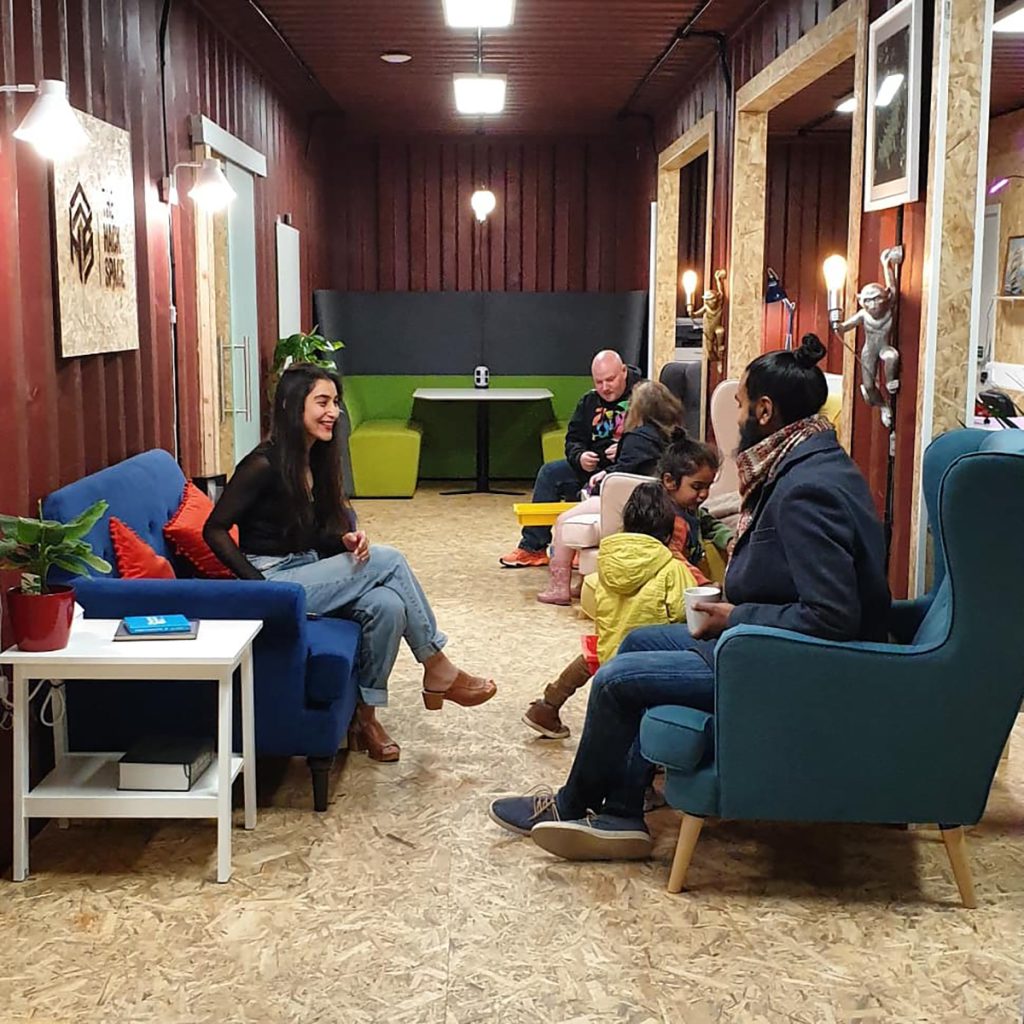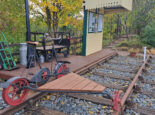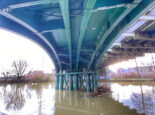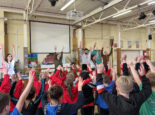The Hack Space
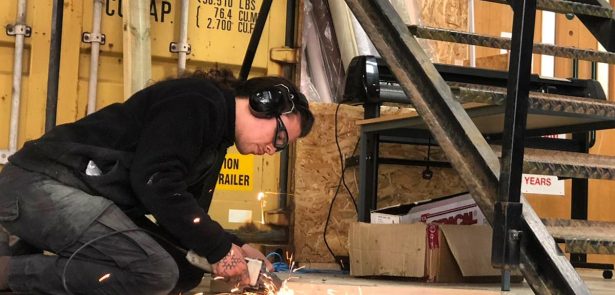
The HackSpace is a community focused centre providing access to specialist tooling and machinery, collaborative workshops and co-working. Its aim is to increase opportunities and investment in STEAM industries and activities in the city, whilst providing a social environment to discover new skills and crafts. But what is ‘STEAM’ you ask? Well, it’s a relatively recent concept, putting the Arts back into STEM (Science, Technology, Engineering and Maths). The Moment talked to founder Tyler Clark – ‘mechanical engineer, home-educator and general breaker of stuff’ – about how it all comes together.
To begin with, how does The HackSpace work – and why did it come about?
The HackSpace is a community workshop and a working space. So let’s say, for example, you wanted to build your own dining table. To do that at home, you would not only need access to space, like a great big shed or workshop garage, you would probably also need at least £500 worth of tools. If you’ve got to go and buy the tools and then go through the learning process of how to build it – well, a lot of people are just going to go and buy one from IKEA. But you can build one here instead.
That process of making something is so calming for a person. We are a species of makers – that’s one thing that defines us as human beings, our hands and brains are incredibly complex – but, without getting too political, over recent decades we’ve kind of moved away from make, create and repair and replaced it with the convenience of mass production. That sounds quite off-topic, but at The HackSpace we’re here solely to enable you to make the things you want and learn the skills that you need in a peer-to-peer learning environment. So, although we have a structure where, you know, we’ll offer scheduled workshops, the main thing about it is that you will build bonds and friendships with other members. We’ve got over 100 members now, and we’ve got friendships striking up left, right and centre, somebody that’s helping one person with this project in exchange for that person helping them with one of theirs – if somebody knows how to do coding, for example. It’s a skill swap, and community building. Making friends as an adult can be pretty bloody hard, but somewhere like here enables you to get rid of that initial awkwardness that you might have elsewhere, like a pub you’ve never been to. Here, we’ve got the tools, and if you start making something you can guarantee that somebody will come along and ask what you’re making and you’ll start talking. And maybe they’ll be able to help you with that, even if it’s just some help with heavy lifting.
The co-working space is the professional side of it, and effectively subsidises the rest of what we do. We try to keep it as cheap and as accessible as possible because we don’t want to exclude anyone, so there’s the Maker memberships at £20 a month, which give you access to all the tooling and unlimited use of the space. Then the co-working: a dedicated space is fully equipped with gigabit internet, dedicated desks, meeting room, and they get access to the full workshop as well, with the 3D printing, laser cutting, soldering stations, design suites loaded up with programmes that people learn design skills on. We’re basically a great big workshop for everybody.
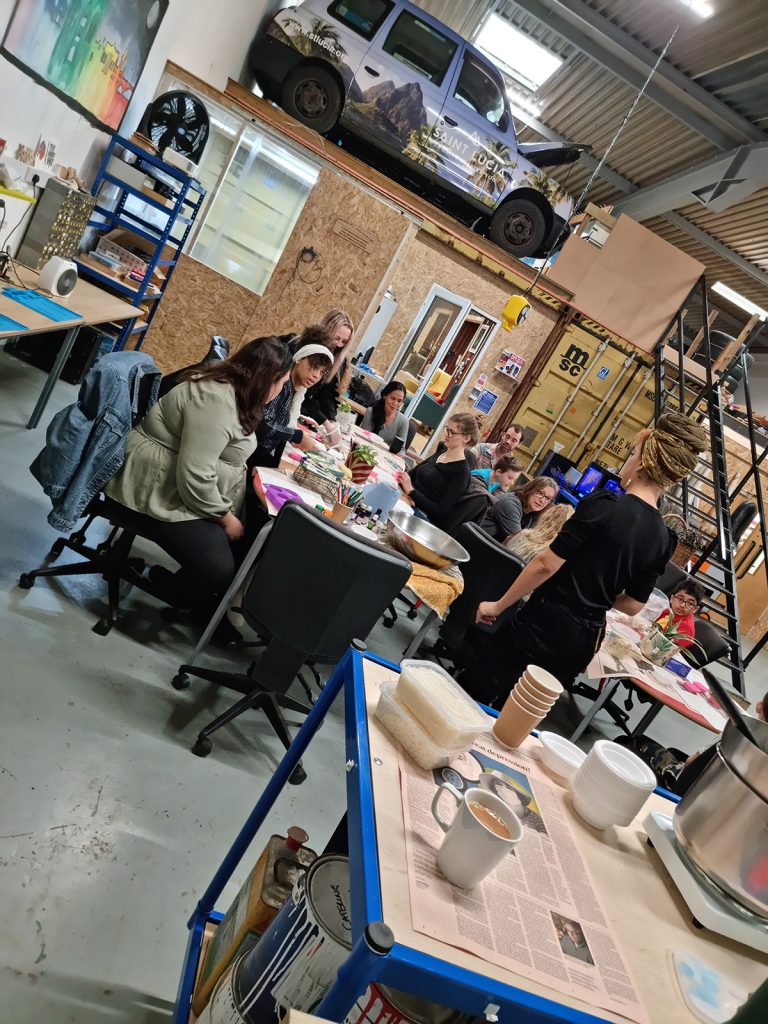
You mention some traditional woodworking skills there, but also coding and 3D printing. How important is it that you have these two elements coming together in one place?
The amalgamation of old and new is absolutely essential. Without people co-operating it just wouldn’t work as well as it does. We have members who have 50 to 60 years experience under their belt making things, who have been say, model engineers or turners or designers for their entire working life, and have got skills that are going to disappear when they do. But it’s amazing seeing the joy that they get being able to pass on their knowledge and skills to somebody just starting out in their 20s. It’s like a legacy. So, they’re able to pass on their skills, but they also get skills back. Maybe the person they’re helping is then able to, say, help them set up a Zoom so they can chat with their niece in Australia, because they’ve grown up around that digital tech. So, yes, getting the two working together is absolutely vital not just for development of projects, but also for personal growth when working with people we don’t usually work with in our daily lives.
Let me ask about putting the ‘A’ in STEM, which is obviously important to you… Art is often seen as the very opposite of science, as if these two things are in conflict, but the new thinking seems to acknowledge that both are often interdependent.
Yeah, it’s an often overlooked element of STE(A)M. We’ve moving on from a mechanical view of science and engineering, machine learning, biology, and as these fields continually develop, we’re realising we need the creative industries – or what we would consider traditionally as creative industries, such as artists – to make a lot of this work, such as the visualization of data. If you want to sort of educate 10 million people on, let’s say, genetics and why it’s paramount we are all aware how it affects us, you’re not going to do that by throwing a load of chemical formulations at them.
But they have often been at loggerheads. Things have progressed fantastically, but I can’t help wondering how much more progress we would have had if we didn’t isolate the two doctrines – if we didn’t consider an artist as somebody that’s incapable of thinking scientifically. A perfect example of that is Neri Oxman. She’s an Israeli-American architect, designer, biologist… She’s just fantastic. She combines the arts with sciences, and her work is some of the most forward thinking on the planet. Nobody else is doing it. So I think getting the two working together – and getting people automatically assuming that they’re together, rather than separate – is very useful.
Modern chemistry is a huge function born out of the creative industries. Designers wanted more vibrant colours to make their textiles, so that impetus came from the fashion industry experimenting with different chemicals and materials to create what they required, this led to a boom in colourful fashion, which drove investment into chemistry, which was still considered a young, juvenile discipline. It’s not scientifically educated people that are going ‘OK, we’re going to do this…’ They’re assisting, but it’s not coming from them. But education, I think, also needs to understand that the two – art and science – are unequivocally linked. They’re not two separate things.
I noticed you said that making was ‘calming’. Do you think that in a way it’s an antidote to the sense of disconnection from the physical world that digital tech can bring? It brings the whole world to our fingertips, but we’re not really touching any of it…
Yes, 100%. We had somebody in the other week, singing our praises. I think it was his fourth time he had been here. And he said ‘You know, I haven’t picked up my phone for four hours…’ You might think you’d miss emails or calls, but he didn’t care. And the look on his face… He thought it was just fantastic. He was in the workshop, using the router, and while you’re there you can just switch off and your mind can go anywhere rather than where your phone tells it to go. We never really get the time to be bored anymore, to go within our own skulls, whereas when somebody is building a project they can get on with what they’re doing and just let their mind wander wherever it wants to.
In my opinion, the issue at the minute is not the digital tech itself, it’s the way that we’re using it. So for example, the smartphone isn’t the problem, it’s the apps that we’ve got on it that are the problem, such as Facebook, Twitter, Instagram. It’s easy to complain about these things, and I’ll sit there and scroll through it just as much as the next person, but it’s too easy to get those micro-dopamine hits. And actually, going into the science of it, what is effectively destroying the fabric of us as people is that we’re getting these hits every time we swipe up and see a new picture. It’s actually rewiring our brains, which is why things like depression are anxiety are in the rise as ‘real life’ doesn’t provide the infinite supply of dopamine hits, we have become addicted to feeling addicted. That’s why somewhere like here is so important, because it reconnects people with doing things with their hands and thinking about their next step, using grey matter we have all let
the internet take over. I mean, how many people know how to use a map anymore? I don’t. If we can’t find our way using Google, we ain’t getting there! And that’s the problem with the digital age; although we have access to information, we’re not thinking about that information. We’re just accepting it. Having an easy map is great, but if its preventing us from experiencing the frustration of being lost, the wonder of being lost, being stuck and having to use your noggin to get out of a jam, then what’s the point?
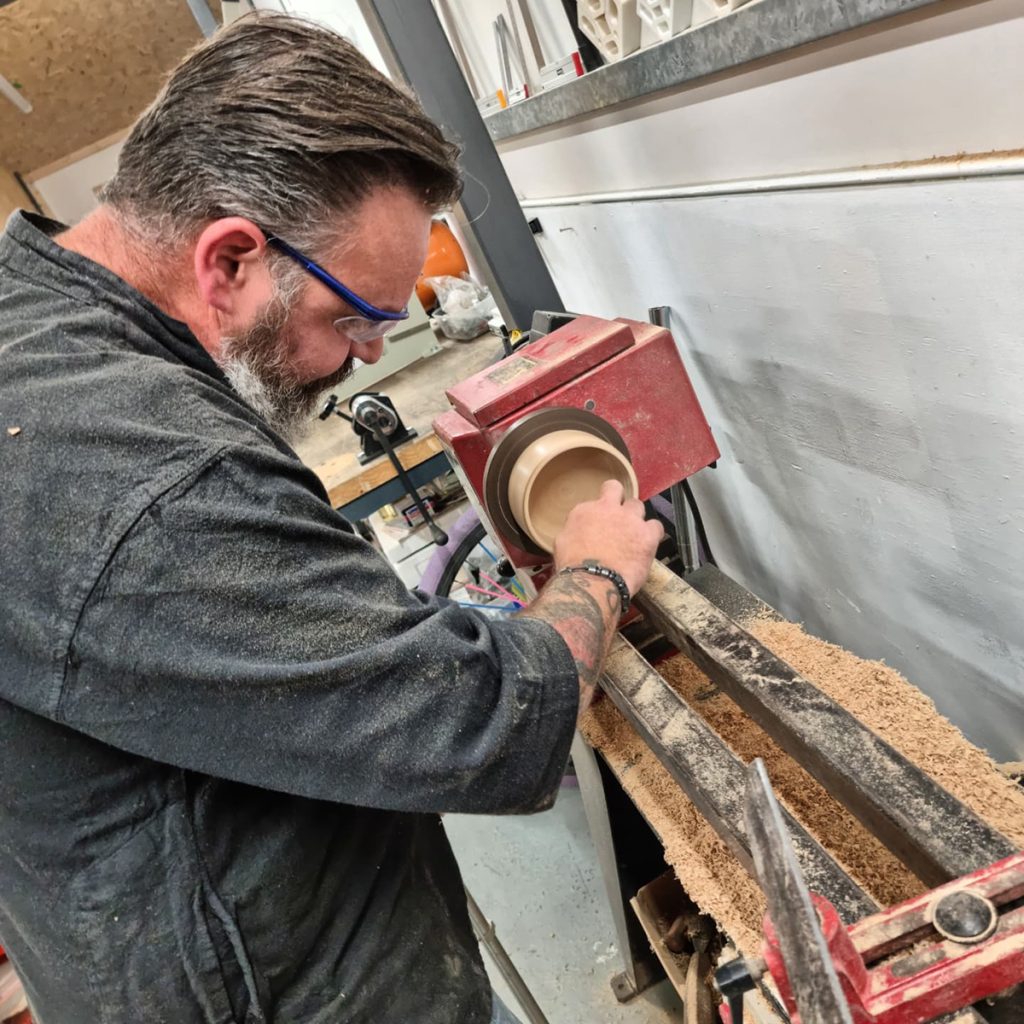
What kinds of people use HackSpace?
When people ask us what our demographic is, we can’t answer that question, because we don’t have one. Some of our members are in their 70s – I think our oldest member is 81. And then we’ve got other members who are 16 and fresh out of school. We kind of hit the median between about 25 and 45; I would say that was a bulk of the people thatuse this space. So, you get a lot of the old school and the new school, and the in-between school. It’s actually really nice to see, because when individuals spend time around different people, instead of them being an idea or concept, they become a person. So, you might have someone that’s in their 50s, and some gender-fluid 20 year-old. On Facebook, commenting on an article from the Independent, they’re potentially going to be at each other’s throats. But get them in a space and talking – actually having a conversation and one helping the other – and you watch that slip away. It literally just disappears. You can see the bias and prejudice in both people’s eyes fade completely. And then by the end of it, they’ve ended up making a project together, which is really cool. People love helping each other.
Can you give examples of the kinds of projects that you have going on here?
The projects we’ve got going on in the building are numerous! So we’ve got one guy making a pinstripe pig, it weighs about 300kg! He’s glued together a whole load of plywood, and he’s shaped out a 3D pig! It’s nearly finished, and that is going to be one great big garden ornament. We’ve got somebody that’s made an ultrasonic levitator. It’s absolutely fantastic to see. He used 100 transducers – it took him ages to solder – and then you can suspend water droplets or polystyrene in it and they literally float. It’s quite spooky. We’ve got artists here doing all kinds of work – and what’s quite nice is a lot of it pops up on the walls. We actively encourage people to make the space their own. We’ve got weevils and squids and all sorts!
You mentioned the more formal, scheduled workshops that you offer here. What kinds of workshops do you have?
A lot of them are dependent on what workshop leads I can get. I’ll deliver a lot of them – the woodworking and laser cutting ones and stuff like that. But we do wood turning, metal turning, we’ve got macrame workshops coming up, soap making – all sorts!
What’s your background, and how did you come to be doing this?
I come from an engineering background. I did it kind of backwards, I went down the apprenticeship route then went into formal education and did a degree. Then numerous things after that, that were science and engineering based. When my youngest child was born, I moved back to Peterborough, because I spent my 20s in London. I was coming from an environment where I was doing research and could learn and make things of my own volition, but I found that there wasn’t really anywhere in Peterborough that I was able to do that. And it was a case of ‘OK, there isn’t somewhere like that here. Let’s do it…’ And I do think spaces like this are so important for promoting a certain kind of culture within a city. I do believe that places like this are so fundamental in creating those new bonds, those new ideas of what’s available to people in the city – and getting people actually doing stuff. It’s all very well a population growing in size, but the facilities available also need to grow too.
I’ve seen you mention before about the importance of keeping skills and talent in Peterborough, rather than everybody just moving away when they’re old enough…
We export our talent. We’re really good at that. But although there’s a lot of issues it’s actually an incredibly innovative city. We’ve got some major companies here in the city that are in the forefront of science and material science, but nobody outside that circle would know. And we’ve got some really creative people here, but we need to provide for them to keep them. If we can do our part to help Peterborough grow into the city it could be, then great.
What’s your message to people wanting to get involved? And who qualifies?
Everybody qualifies. My advice would just be ‘Just come’. Jump in. A lot of people might feel a bit intimidated coming into a workshop, because they’ve never done anything like this before. But
once they get in they realise what kind of environment it is. There’s no such thing as a stupid question somewhere like here, and nobody’s going to be laughing at them. That very quickly slips away.So my advice to anyone, even if they don’t have a project and just want to maybe learn some new skills, is to come and see.
